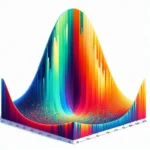Title: Bell Curve in Cognitive Testing
The Bell Curve, also commonly referred to as a normal distribution curve, is a graphical representation of the distribution of scores that emerge from standardized cognitive tests. This quintessential shape in statistics and psychological testing symbolizes the spread and frequency of a set of data, specifically intelligence scores, where the x-axis represents the score value and the y-axis represents the number of individuals obtaining each score.
Definition and Importance:
At the heart of cognitive testing, the Bell Curve plays a crucial role in understanding the distribution of cognitive abilities within a population. It is characterized by its symmetric, bell-shaped appearance, indicating that most individuals score near the middle, or average range, with fewer individuals scoring either very low or very high.
Standard Deviation and Percentiles:
Central to the Bell Curve is the concept of the standard deviation, a measurement that indicates the spread or dispersion of scores around the mean. Cognitive test scores are often categorized into percentiles that correlate with areas under the curve, illustrating how a person’s score compares to the normative sample.
IQ Scores and the Bell Curve:
In the domain of intelligence testing, IQ scores typically follow a Bell Curve, where an average IQ score is set at 100. Scores are spread out on either side, with approximately 68% of the population scoring within one standard deviation of the mean — between 85 and 115 — and 95% within two standard deviations.
Applications in Education and Psychology:
Educators and psychologists use the Bell Curve to identify and support individuals with exceptional cognitive abilities or those who struggle with specific learning disabilities. It serves as a critical tool for making data-driven decisions regarding individual educational planning and interventions.
Misconceptions and Controversies:
Despite its prevalence, the Bell Curve is subject to misconceptions and has been at the center of heated debates. Critics argue that it can lead to stigmatization and self-fulfilling prophecies, while proponents stand by its utility in educational and psychological assessments.
Conclusively, the Bell Curve is an integral concept in the realm of cognitive testing, offering a visual and statistical foundation for interpreting assessment results and tailoring educational programs to cater to diverse cognitive profiles. Understanding the Bell Curve is essential for professionals in the field of psychology, education, and human resources to accurately appraise individual abilities and potential.

